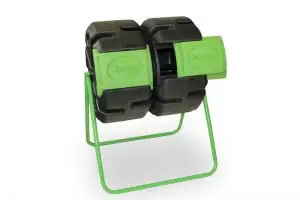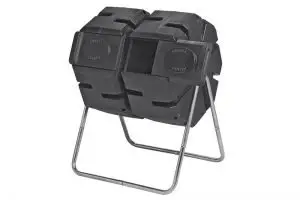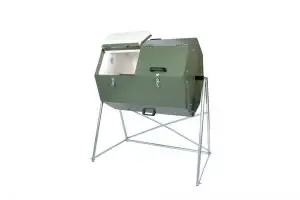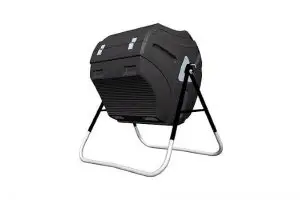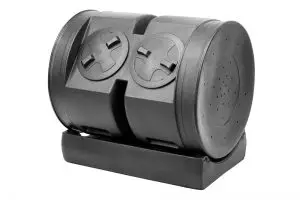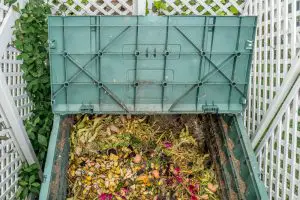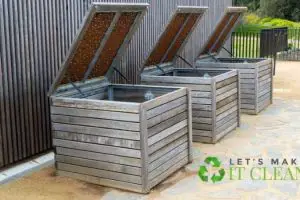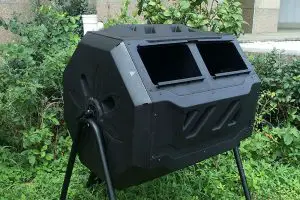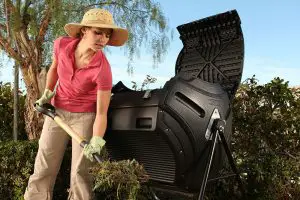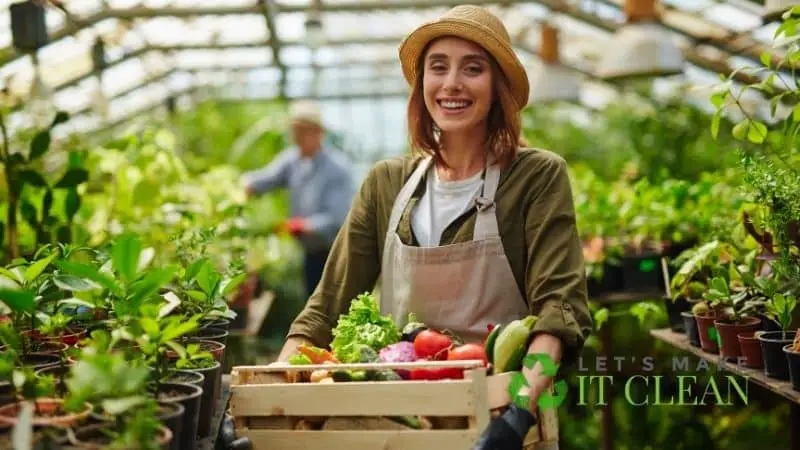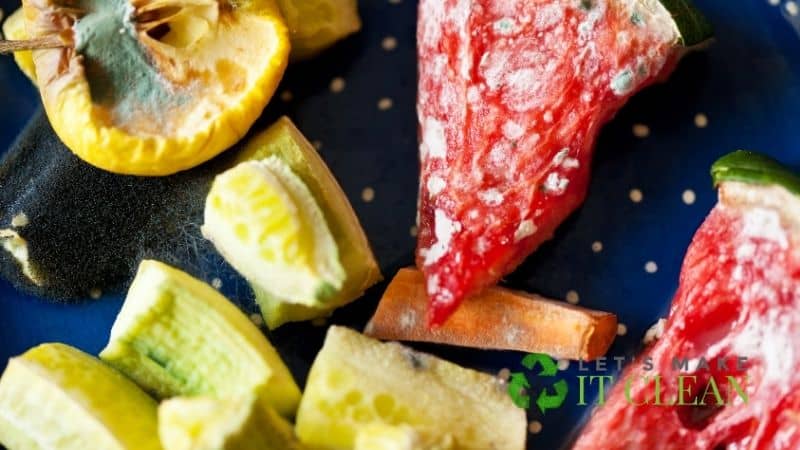Gather organic material from your home, including leaves, grass clippings, vegetable waste, and food scraps.
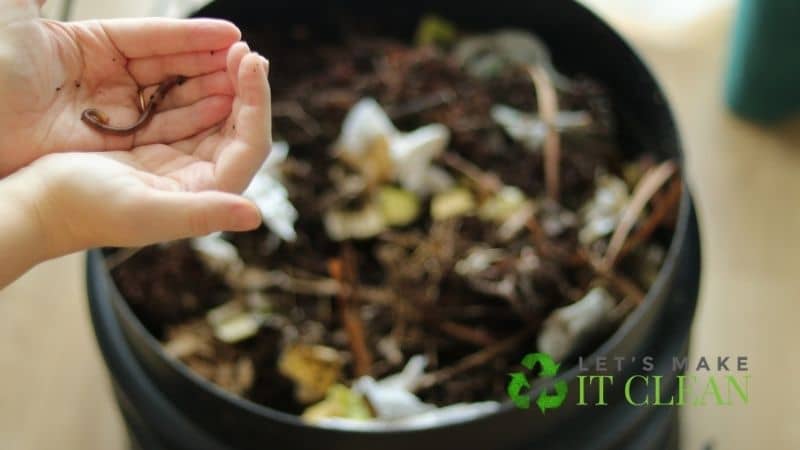
Add them to your bin for composting. Eggshells, old fiber t-shirts, non-glossy paper, dead plants, tea bags, and coffee grounds are also safe for use in vermicomposters.
Quick Navigation
Do you ever wonder what content is best to add to your worm composting bin?
Worm bin composting is useful in adding nutrients to your soil and creating a waste-free environment. Red wiggler worms don’t consume all sorts of materials. The challenge becomes understanding the content that is safe to use in the bin.
Here are the worm composting basics you need to master.
What You Can Put in a Worm Compost Bin
Worm composting accommodates a variety of kitchen waste and other organic matter ingredients. The food scraps you have in your home are safe for worms to feed on when added to the worm composter.
Gather melon rinds whenever you feed your family and feed worms with them. The stems, leaves, and roots of different plants are part of the bins’ nutritional content. Other food scraps that worms will eat include peels, seeds of different plants, and husks. vegetable scraps are also good for the worms.
Whenever you prepare eggs, storing the eggshells as part of your bin composting material is essential. If you live near an ocean, you are free to collect seashells, which you will rinse.
Mix them with seaweed and compost these materials. Be warned that adding a whole egg will cause a foul smell in your compost bin when worms feed on the egg content.
There are clothes that you or other members of your family outgrow. These clothes include old t-shirts and blouses. Boxers and socks also qualify if they are made of natural fiber. If you have sweaters made of natural yarn or strings, feel free to add them to your bins for the red wigglers to compost.
Paper products that are made of non-glossy material are safe to be used in vermicomposting.
Whenever you have old newspapers taking up your space, combine them with used envelopes and shredded paper then compost them. The cardboard boxes that you use to store these paper products make great food for your red wigglers.
Homeowners who love tea leaves have a rich nutrient source for their Eisenia foetida. The teabags, coffee filters, and grinds from the kitchen efficiently provide food for your bin’s red worms. If you don’t want to hurt yourself when harvesting your worm tea or finished compost, remove any staples.
Other materials that you can add to your bin composters are dead plants from your garden. Also, when you trim the grass in your backyard, add it to your compost pile. You must put only plants and grass clippings that have not recently come into contact with pesticides.
Red wigglers work on non-treated wood and its byproducts to give you high-quality compost. The wood byproducts that you can use are sawdust and shavings collected whenever there is wood construction. Whenever you burn pieces of wood, collect the wood ash and add it to your composter.
At times you may have hair waste in your home. This waste can be combined with feathers from your chicken or pet birds used in the composting system.
What to Avoid in a Vermicomposter
There is food waste that includes kitchen scraps that should not go to the compost bins. These food waste and kitchen scraps reduce the quality of your compost.
Juice from lemons, oranges, and lime, when added to the bin, may dangerously increase the acidity level if added in excess.
It would be best if you avoid adding the feels of these fruits as well. This is because they will transfer the acidity to your soils, rendering it unsafe for plants. Baby worms will not perform optimally under these extreme conditions.
Adding garlic and onions to your bins will cause more harm than good. When you feed your worms with these materials, you are likely to get horrible stenches. Avoid smelly material that makes your fingers or other parts of the body smell.
If you are a worm bin owner who has meat scraps, don’t feed the worms with the meat. Similarly, avoid bones that would hurt a gardener. Adding oils, fats, and grease in your bin results in bad smells, just like when you add meat.
Using plastic in a worm bin pollutes the soil.
The plastic can either be from a plastic bin or plastic coated papers. When you take the finished compost to your garden, you risk destroying your plants. You will have to do a soil amendment to support crop growth. The amendment will involve adding the number of worms and the amount of food in your bins.
Manufacturers package their products in bags that have stickers. If you buy a compostable bag that has a sticker, remove the sticker. Envelopes with stamps should not be added to the composter without first removing the stamp, a sticker.
People make a mistake by adding pepper, salt, or any other type of spice to the compost pile. When used, these spices cause discomfort to your worms slowing down the composting process.
Dairy products are an enemy to the worms in your compost maker. Avoid putting milk, yogurt, and other products manufactured using milk.
If you use pet waste, you will compromise your worm bin. It will help if you don’t expose the worms to cat or dog feces. When you notice any pet waste in your storage bin, remove it to avoid contaminating the pile.
Dead plants are a supplier of disease to your soil if used in the worm bins. Before emptying content from your storage bins, please go through it to remove dead plants that may negatively affect your compost when consumed by the worms.
Worm Bin Bedding Material
The best bedding material that yields the best results from your worms is either paper that is shredded or leaves. If you have access to shredded cardboard, straw, or egg cartons, you can use them as bedding material for your nightcrawlers.
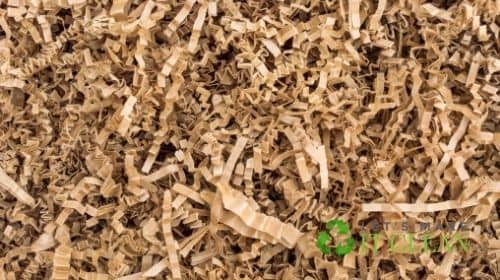
Homeowners who position their bins indoors should avoid leaves and straw. These materials easily attract insects and fruit flies that may find their way into the bin through ventilation holes. There are other creatures such as rodents that get attracted and reproduce in your house.
After preparing a comfortable bed for your composting worms, add potting soil from your garden and mix it with worm castings. If you have a larger jug in your house, feel free to use it. You will then add water to the pitcher maintaining an optimum moisture level similar to that of a damp sponge.
Only add your worms from your worm farm to the bin after you have prepared the bin achieving the right moisture level. The air temperature must also be favorable for worm bin composting.
If the moisture level and temperature are not right, add more dry matter to your bins. Also, make sure you have holes for ventilation that allows sufficient air for the worms.
Feeding Worms
Make sure you use composting matter that is in small pieces when feeding your worms. Compost piles that have smaller scraps and composting material have a faster process of making compost.
If you realize that the ingredients you have for composting are huge in size, cut them into manageable pieces.
Your family’s size determines worm feeding frequency. There is no specified period for adding food to the feeding trays of your composting worms. Healthy worms in a good vermicomposter will consume material about half their weight every day.
To maximize your profits, allow the worms to eat the recently added food before adding a fresh top layer. If you continuously add content, you will overfeed the worms reducing their effectiveness.
Conclusion
There are many materials that you can put in your bin without worrying about your worms. The materials must have enough greens and browns to balance the nutrient ratio.
Your garden will benefit best from balanced green and brown material in a worm bin composter.
Avoid the ingredients that are likely to bring bad smells. You should also not add any content that can injure a gardener, such as staples or bones.

